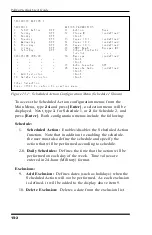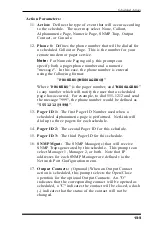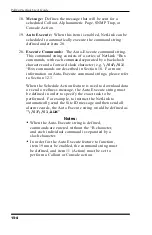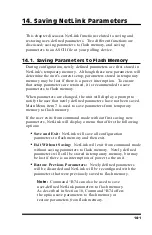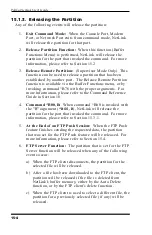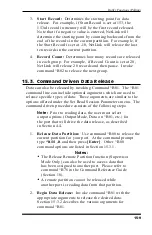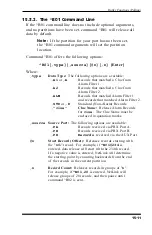
15.1.1. Partitions and Files
When data is received from the PBX, NetLink sorts each record
into one of nine possible "files". Records are sorted according to
Data Type and Source Port. There are three Data Types; Standard
Data (Non-Alarm Records), Records that match Alarm Filter 1,
and Records that match Alarm Filter 2. There are also three
source ports; PBX Port A, PBX Port B, and the AUX Port.
As shown in Figure 15.1, each file contains a specific data type
received from a specific port. When a command port sets a
partition, that port is granted ownership of one or more of these
files. The File List screen (Status Displays, Item 2) can be used to
determine which files are linked to each command port.
Note that these files are always "open"; new data is continually
added to each file. When a partition is set, all records received up
to that point will be available for reading or erasure. However,
new records received after the partition is set will not be available
until the partition is reset.
Note also that the "Store Alarm Data" option can be used to
override the default storage location for alarm records. Using this
option, alarm records for a selected port can be stored in the Alarm
Files, in the Standard File (Non-Alarm), or in both the Alarm File
and Non-Alarm File. This allows Alarm Records to be used for
call accounting purposes only, alarm tracking only, or for both.
The "Store Alarm Data" option is located in the configuration
menus for PBX Port A, PBX Port B, and the AUX Port.
15-2
PollCat NetLink User's Guide
Figure 15.1: Data Partitions and Files
Summary of Contents for PollCat NetLink
Page 2: ......
Page 20: ...3 8 PollCat NetLink User s Guide...
Page 74: ...6 24 PollCat NetLink User s Guide...
Page 140: ...14 6 PollCat NetLink User s Guide...
Page 255: ......





